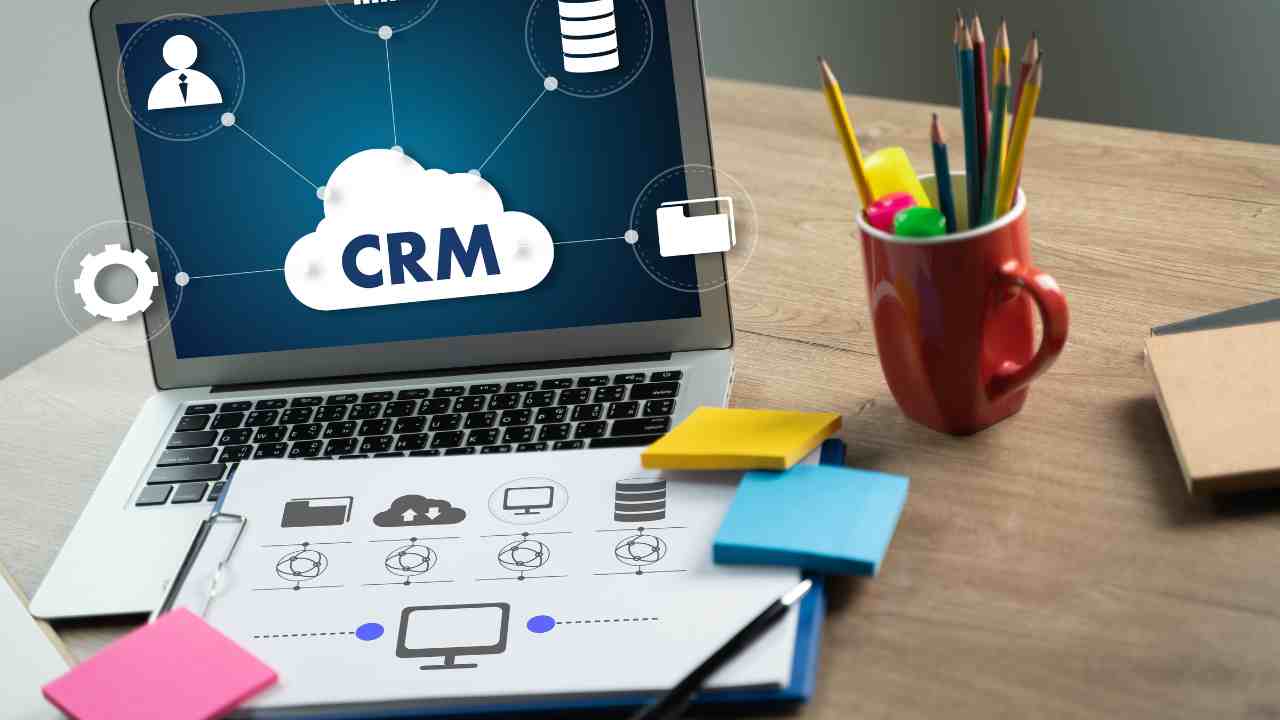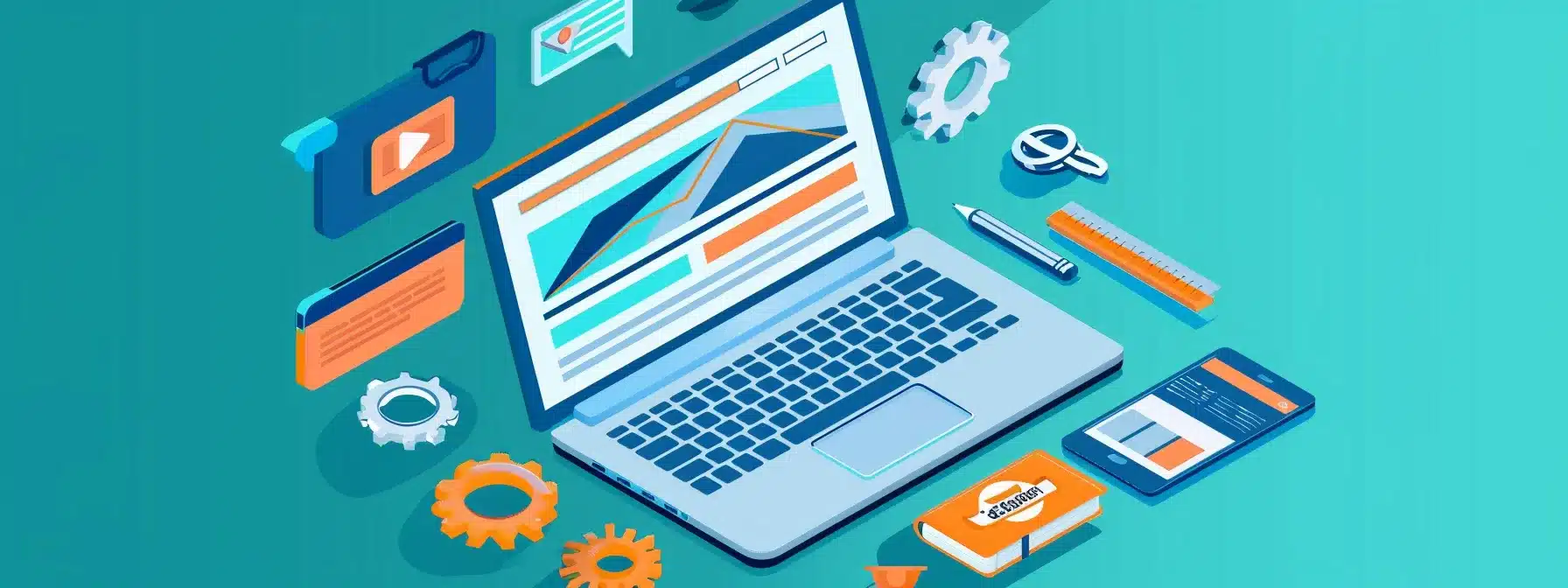“Optimize your CRM funnel for unparalleled conversion rates.”
Streamlining a CRM funnel for maximum conversion is a crucial aspect of any business’s sales and marketing strategy. By optimizing the customer relationship management (CRM) process, businesses can effectively move prospects through the sales funnel and convert them into loyal customers. This involves implementing efficient lead generation, nurturing, and closing techniques to ensure a seamless and effective customer journey. In this article, we will explore various strategies and best practices to streamline a CRM funnel for maximum conversion.
Learn more about an All-In-One Sales & Marketing Platform and get a 14 Day FREE Trial
Understanding the CRM Funnel: A Comprehensive Guide
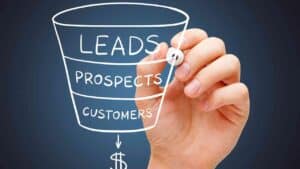
Streamlining a CRM Funnel for Maximum Conversion
Understanding the CRM Funnel: A Comprehensive Guide
In today’s competitive business landscape, customer relationship management (CRM) has become an essential tool for companies looking to maximize their sales and improve customer satisfaction. A CRM funnel is a systematic approach to managing customer interactions and guiding them through the various stages of the sales process. By understanding the CRM funnel and implementing strategies to streamline it, businesses can significantly increase their conversion rates and drive revenue growth..
The CRM funnel consists of several stages, starting with lead generation and ending with customer retention. Each stage represents a different level of engagement with the customer, and it is crucial to optimize each step to ensure a smooth transition from one stage to the next. By doing so, businesses can effectively nurture leads and convert them into loyal customers.
The first stage of the CRM funnel is lead generation. This is where businesses attract potential customers and gather their contact information. To streamline this stage, companies can leverage various marketing channels such as social media, email campaigns, and content marketing. By targeting the right audience and delivering compelling content, businesses can generate high-quality leads and increase their chances of conversion.
Once leads are generated, the next stage is lead qualification. This involves assessing the quality and potential of each lead to determine their likelihood of becoming a customer. To streamline this stage, businesses can implement lead scoring systems that assign a numerical value to each lead based on their demographics, behavior, and engagement with the company. By prioritizing leads with higher scores, businesses can focus their efforts on those with the highest conversion potential.
After lead qualification comes lead nurturing. This stage is all about building relationships with leads and providing them with valuable information to guide their decision-making process. To streamline this stage, businesses can use marketing automation tools to deliver personalized content and automate follow-up communications. By providing relevant and timely information, businesses can keep leads engaged and increase their chances of conversion.
The next stage in the CRM funnel is the sales process. This is where leads are converted into paying customers. To streamline this stage, businesses can implement sales enablement strategies such as providing sales teams with the right tools and training to effectively close deals. By equipping sales teams with the necessary resources, businesses can increase their conversion rates and drive revenue growth.
Once a customer is acquired, the final stage of the CRM funnel is customer retention. This stage is all about maintaining and strengthening the relationship with the customer to encourage repeat purchases and foster loyalty. To streamline this stage, businesses can implement customer retention strategies such as personalized marketing campaigns, loyalty programs, and excellent customer service. By providing a positive and personalized experience, businesses can increase customer satisfaction and maximize their chances of retaining customers.
In conclusion, streamlining a CRM funnel for maximum conversion is essential for businesses looking to drive revenue growth and improve customer satisfaction. By understanding the various stages of the CRM funnel and implementing strategies to optimize each step, businesses can effectively nurture leads and convert them into loyal customers. From lead generation to customer retention, every stage of the CRM funnel plays a crucial role in maximizing conversion rates. By leveraging technology, personalization, and effective communication, businesses can streamline their CRM funnel and achieve their sales and growth objectives.
Learn more about an All-In-One Sales & Marketing Platform and get a 14 Day FREE Trial
Top Strategies for Optimizing Your CRM Funnel
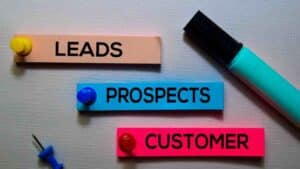
Streamlining a CRM Funnel for Maximum Conversion
In today’s competitive business landscape, optimizing your customer relationship management (CRM) funnel is crucial for maximizing conversion rates. A well-designed CRM funnel can help you attract, engage, and convert leads into loyal customers. By streamlining your CRM funnel, you can ensure that every step of the customer journey is optimized for maximum conversion. In this article, we will explore the top strategies for optimizing your CRM funnel and achieving higher conversion rates.
The first step in streamlining your CRM funnel is to clearly define your target audience. Understanding your ideal customer profile will allow you to tailor your marketing efforts and messaging to resonate with your target market. By segmenting your audience based on demographics, interests, and behaviors, you can create personalized experiences that drive engagement and conversion.
Once you have defined your target audience, the next strategy is to create compelling and relevant content. Content is the fuel that drives your CRM funnel, and it plays a crucial role in attracting and engaging leads. By creating high-quality blog posts, videos, social media content, and email newsletters, you can position yourself as an authority in your industry and build trust with your audience. Remember to align your content with the different stages of the CRM funnel, providing educational content for awareness, informative content for consideration, and persuasive content for decision-making.
Another important strategy for optimizing your CRM funnel is to implement marketing automation. Automation allows you to streamline repetitive tasks and deliver personalized experiences at scale. By automating lead nurturing, email campaigns, and follow-ups, you can ensure that no lead falls through the cracks. Automation also enables you to track and analyze customer behavior, providing valuable insights for further optimization.
In addition to automation, integrating your CRM with other tools and platforms is essential for streamlining your funnel. By connecting your CRM with your website, social media platforms, and customer support systems, you can create a seamless customer experience across multiple touchpoints. This integration allows you to capture and track valuable data, enabling you to make data-driven decisions and optimize your funnel based on real-time insights.
Furthermore, optimizing your CRM funnel requires continuous testing and experimentation. A/B testing different elements of your funnel, such as landing pages, email subject lines, and call-to-action buttons, can help you identify what works best for your audience. By analyzing the results and making data-driven adjustments, you can refine your funnel and improve conversion rates over time.
Lastly, it is crucial to provide exceptional customer support throughout the entire customer journey. A positive customer experience can significantly impact conversion rates and customer loyalty. By offering timely and personalized support, addressing customer concerns, and proactively engaging with your customers, you can build strong relationships and turn satisfied customers into brand advocates.
In conclusion, streamlining your CRM funnel is essential for maximizing conversion rates and achieving business success. By clearly defining your target audience, creating compelling content, implementing automation, integrating your CRM with other tools, testing and experimenting, and providing exceptional customer support, you can optimize every step of the customer journey. Remember, a well-optimized CRM funnel is a powerful tool that can help you attract, engage, and convert leads into loyal customers.
Learn more about an All-In-One Sales & Marketing Platform and get a 14 Day FREE Trial
Key Metrics to Track for CRM Funnel Conversion

Streamlining a CRM Funnel for Maximum Conversion
In the world of sales and marketing, customer relationship management (CRM) is a crucial tool for businesses to effectively manage their interactions with potential and existing customers. A well-optimized CRM funnel can significantly increase conversion rates and drive revenue growth. However, to achieve maximum conversion, it is essential to track key metrics that provide valuable insights into the performance of the CRM funnel.
One of the most critical metrics to track is the lead-to-opportunity conversion rate. This metric measures the percentage of leads that progress to the opportunity stage in the sales process. By monitoring this metric, businesses can identify any bottlenecks or inefficiencies in their lead qualification process. For example, if the lead-to-opportunity conversion rate is low, it may indicate that the criteria for qualifying leads need to be refined or that the sales team requires additional training.
Another important metric to consider is the opportunity-to-win conversion rate. This metric measures the percentage of opportunities that result in a successful sale. A low opportunity-to-win conversion rate may indicate that the sales team is not effectively closing deals or that there are issues with the product or pricing strategy. By closely monitoring this metric, businesses can identify areas for improvement and take corrective actions to increase their conversion rates.
Tracking the average deal size is also crucial for optimizing the CRM funnel. This metric provides insights into the value of each opportunity and helps businesses identify trends in their sales performance. For example, if the average deal size is consistently low, it may indicate that the sales team is not effectively upselling or cross-selling to customers. By analyzing this metric, businesses can develop strategies to increase the average deal size and maximize their revenue potential.
Furthermore, businesses should track the sales cycle length to ensure that the CRM funnel is operating efficiently. This metric measures the time it takes for a lead to progress through the entire sales process, from initial contact to closing the deal. A lengthy sales cycle may indicate that there are unnecessary delays or inefficiencies in the CRM funnel. By identifying and addressing these issues, businesses can streamline their sales process, reduce the sales cycle length, and improve overall conversion rates.
In addition to these key metrics, businesses should also track the source of leads to determine which marketing channels are most effective in generating high-quality leads. By analyzing this data, businesses can allocate their marketing resources more effectively and focus on the channels that yield the best results. This approach not only maximizes conversion rates but also optimizes marketing ROI.
In conclusion, tracking key metrics is essential for streamlining a CRM funnel and achieving maximum conversion. By monitoring metrics such as lead-to-opportunity conversion rate, opportunity-to-win conversion rate, average deal size, sales cycle length, and lead source, businesses can identify areas for improvement and take proactive measures to optimize their CRM funnel. With a well-optimized CRM funnel, businesses can increase conversion rates, drive revenue growth, and ultimately, achieve their sales and marketing objectives.
Learn more about an All-In-One Sales & Marketing Platform and get a 14 Day FREE Trial
How to Identify and Eliminate Bottlenecks in Your CRM Funnel

Streamlining a CRM Funnel for Maximum Conversion
In today’s competitive business landscape, customer relationship management (CRM) is crucial for success. A well-optimized CRM funnel can help businesses effectively manage their leads and convert them into loyal customers. However, identifying and eliminating bottlenecks in the CRM funnel is essential to ensure maximum conversion rates. In this article, we will explore how businesses can streamline their CRM funnel to achieve optimal results.
The first step in streamlining a CRM funnel is to identify the bottlenecks that hinder the conversion process. These bottlenecks can occur at various stages of the funnel, such as lead generation, lead qualification, or lead nurturing. By analyzing the data and metrics associated with each stage, businesses can pinpoint the areas that need improvement.
One common bottleneck in the CRM funnel is lead generation. If a business is not generating enough leads, it will have a limited pool of potential customers to convert. To address this issue, businesses can employ various strategies, such as optimizing their website for search engines, running targeted advertising campaigns, or leveraging social media platforms to attract more leads.
Once leads are generated, the next bottleneck often occurs during the lead qualification stage. This stage involves determining whether a lead is a good fit for the business and has the potential to become a paying customer. Businesses can streamline this process by implementing automated lead scoring systems that assign scores based on predefined criteria. This allows sales teams to focus their efforts on leads with the highest conversion potential, increasing efficiency and reducing time wasted on unqualified leads.
Another bottleneck that businesses frequently encounter is lead nurturing. After qualifying a lead, it is crucial to nurture the relationship and guide the lead through the sales funnel. This can be achieved through personalized communication, such as targeted email campaigns or one-on-one interactions with sales representatives. By providing valuable content and addressing the lead’s pain points, businesses can build trust and increase the likelihood of conversion.
To streamline the CRM funnel further, businesses should leverage technology and automation. CRM software can automate repetitive tasks, such as data entry or follow-up emails, freeing up valuable time for sales teams to focus on building relationships with leads. Additionally, integrating CRM software with other tools, such as marketing automation platforms or customer support systems, can provide a seamless experience for both the business and the customer.
Regular monitoring and analysis of key performance indicators (KPIs) are essential to ensure the effectiveness of the streamlined CRM funnel. By tracking metrics such as conversion rates, lead response time, or customer lifetime value, businesses can identify any new bottlenecks that may arise and take proactive measures to address them.
In conclusion, streamlining a CRM funnel is crucial for businesses aiming to maximize their conversion rates. By identifying and eliminating bottlenecks at each stage of the funnel, businesses can optimize their lead generation, qualification, and nurturing processes. Leveraging technology and automation, along with regular monitoring of KPIs, will ensure a smooth and efficient CRM funnel that drives maximum conversion and ultimately contributes to business growth.
Learn more about an All-In-One Sales & Marketing Platform and get a 14 Day FREE Trial
Best Practices for Nurturing Leads in the CRM Funnel
Streamlining a CRM Funnel for Maximum Conversion
In today’s competitive business landscape, it is crucial for companies to effectively nurture leads in their CRM funnel to maximize conversion rates. The CRM funnel, also known as the customer relationship management funnel, is a systematic approach to managing and nurturing leads from the initial contact to the final sale. By implementing best practices for nurturing leads in the CRM funnel, businesses can streamline their processes and increase their chances of converting leads into loyal customers.
One of the first best practices for nurturing leads in the CRM funnel is to ensure that the funnel is properly segmented. Segmentation allows businesses to categorize leads based on their characteristics, interests, and behaviors. By segmenting leads, businesses can tailor their marketing messages and strategies to specific groups, increasing the likelihood of conversion. For example, a company selling software may segment leads into categories such as small businesses, medium-sized enterprises, and large corporations, allowing them to customize their approach for each group.
Once leads are properly segmented, it is important to engage them with relevant and personalized content. This can be achieved through targeted email campaigns, social media interactions, and personalized landing pages. By providing leads with valuable and tailored content, businesses can build trust and establish themselves as industry experts. This, in turn, increases the chances of conversion as leads perceive the company as a reliable source of information and solutions to their needs.
In addition to personalized content, businesses should also focus on building strong relationships with leads. This can be done through regular communication and follow-ups. By staying in touch with leads, businesses can address any concerns or questions they may have, and provide them with the necessary information to make an informed decision. This ongoing engagement helps to build trust and credibility, making leads more likely to convert into customers.
Furthermore, businesses should leverage automation tools to streamline their CRM funnel. Automation allows for the efficient management of leads, ensuring that no potential customer falls through the cracks. By automating tasks such as lead scoring, lead nurturing, and follow-ups, businesses can save time and resources while maintaining a consistent and personalized approach. Automation also enables businesses to track and analyze lead behavior, providing valuable insights for further optimization of the CRM funnel.
Another best practice for nurturing leads in the CRM funnel is to continuously measure and analyze the effectiveness of the nurturing process. By tracking key performance indicators such as conversion rates, engagement rates, and customer lifetime value, businesses can identify areas for improvement and make data-driven decisions. This iterative approach allows for continuous optimization of the CRM funnel, ensuring maximum conversion rates and return on investment.
In conclusion, streamlining a CRM funnel for maximum conversion requires implementing best practices for nurturing leads. By properly segmenting leads, providing personalized content, building strong relationships, leveraging automation tools, and continuously measuring and analyzing performance, businesses can optimize their CRM funnel and increase their chances of converting leads into loyal customers. In today’s competitive business landscape, a streamlined CRM funnel is essential for success, and by following these best practices, businesses can stay ahead of the curve and achieve their conversion goals.
Learn more about an All-In-One Sales & Marketing Platform and get a 14 Day FREE Trial
Streamlining the CRM Funnel: Automation and Integration Tips
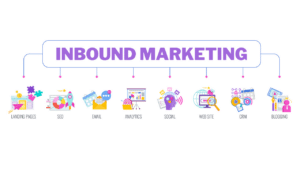
Streamlining a CRM Funnel for Maximum Conversion
In today’s competitive business landscape, customer relationship management (CRM) has become a crucial aspect of any successful organization. A well-optimized CRM funnel can significantly improve conversion rates and drive revenue growth. To achieve this, businesses need to focus on streamlining their CRM funnel through automation and integration. By leveraging technology and implementing efficient processes, companies can maximize their conversion potential and enhance customer satisfaction.
Automation plays a pivotal role in streamlining the CRM funnel. By automating repetitive tasks, businesses can save time and resources, allowing their sales teams to focus on more critical activities. One effective way to automate the CRM funnel is by using email marketing automation tools. These tools enable businesses to send personalized and timely emails to prospects and customers, nurturing them through the sales process. By automating email campaigns, businesses can ensure that leads receive the right information at the right time, increasing the chances of conversion.
Another area where automation can streamline the CRM funnel is lead scoring. Lead scoring is the process of assigning a value to each lead based on their behavior and engagement with the company. By automating lead scoring, businesses can prioritize their efforts and focus on leads that are most likely to convert. This not only saves time but also improves the efficiency of the sales team, leading to higher conversion rates.
Integration is another key aspect of streamlining the CRM funnel. Integrating different systems and tools allows businesses to centralize their data and gain a holistic view of their customers. For example, integrating the CRM system with the company’s website and social media platforms can provide valuable insights into customer behavior and preferences. This information can then be used to personalize marketing campaigns and improve the overall customer experience.
Furthermore, integrating the CRM system with other business applications, such as accounting or customer support software, can streamline processes and enhance efficiency. For instance, when a customer makes a purchase, the CRM system can automatically update the accounting software, eliminating the need for manual data entry. This integration not only saves time but also reduces the risk of errors and improves data accuracy.
To ensure a smooth integration process, businesses should carefully evaluate their existing systems and choose tools that are compatible with their CRM platform. It is also essential to establish clear communication channels between different departments to ensure seamless data flow and collaboration.
In conclusion, streamlining the CRM funnel through automation and integration is crucial for maximizing conversion rates and driving revenue growth. By automating repetitive tasks and implementing email marketing automation tools, businesses can save time and resources while nurturing leads through the sales process. Additionally, automating lead scoring allows companies to prioritize their efforts and focus on leads with the highest conversion potential. Integration, on the other hand, enables businesses to centralize their data and gain valuable insights into customer behavior. By integrating different systems and tools, companies can streamline processes, improve efficiency, and enhance the overall customer experience. Therefore, businesses should invest in technology and efficient processes to optimize their CRM funnel and achieve maximum conversion.
Learn more about an All-In-One Sales & Marketing Platform and get a 14 Day FREE Trial
Effective Communication Techniques for CRM Funnel Conversion
Streamlining a CRM Funnel for Maximum Conversion
Effective Communication Techniques for CRM Funnel Conversion
In today’s competitive business landscape, customer relationship management (CRM) has become an essential tool for companies looking to maximize their conversion rates. A well-structured CRM funnel can help businesses streamline their sales process, improve customer engagement, and ultimately boost their bottom line. However, achieving maximum conversion requires more than just implementing a CRM system. It requires effective communication techniques that guide potential customers through each stage of the funnel.
The first step in streamlining a CRM funnel for maximum conversion is to understand the customer journey. By mapping out the various touchpoints and interactions a customer has with a company, businesses can identify opportunities for effective communication. This includes understanding the customer’s pain points, motivations, and preferences, which can be gathered through market research, customer surveys, and data analysis.
Once the customer journey is understood, businesses can begin implementing communication techniques that align with each stage of the CRM funnel. At the top of the funnel, where potential customers are just becoming aware of a company’s products or services, it is crucial to provide informative and engaging content. This can be in the form of blog posts, social media updates, or email newsletters that educate and inform potential customers about the value and benefits of the company’s offerings.
As potential customers move further down the funnel, effective communication becomes even more critical. At the middle of the funnel, where potential customers are considering their options and evaluating different solutions, businesses should focus on building trust and credibility. This can be achieved through personalized email campaigns, case studies, and testimonials that showcase the success stories of existing customers.
At the bottom of the funnel, where potential customers are ready to make a purchase decision, businesses should employ persuasive communication techniques. This can include offering limited-time promotions, providing personalized product recommendations, and offering exceptional customer service. By tailoring the communication to the specific needs and preferences of each potential customer, businesses can increase the likelihood of conversion.
In addition to tailoring communication techniques to each stage of the CRM funnel, businesses should also leverage technology to enhance their communication efforts. CRM systems offer a wide range of tools and features that can automate and streamline communication processes. This includes email automation, lead scoring, and customer segmentation, which can help businesses deliver the right message to the right customer at the right time.
Furthermore, businesses should not underestimate the power of personalization in their communication efforts. By using customer data and insights, businesses can create personalized experiences that resonate with potential customers. This can include addressing potential customers by their name in emails, recommending products based on their previous purchases, and sending targeted offers based on their preferences.
In conclusion, streamlining a CRM funnel for maximum conversion requires effective communication techniques that guide potential customers through each stage of the funnel. By understanding the customer journey, tailoring communication to each stage, leveraging technology, and personalizing the communication, businesses can increase their conversion rates and drive growth. Implementing these techniques will not only improve the efficiency of a CRM system but also enhance customer engagement and satisfaction.
Learn more about an All-In-One Sales & Marketing Platform and get a 14 Day FREE Trial
Personalization and Customization: Enhancing CRM Funnel Efficiency
Streamlining a CRM Funnel for Maximum Conversion
Personalization and Customization: Enhancing CRM Funnel Efficiency
In today’s competitive business landscape, customer relationship management (CRM) has become a crucial aspect of any successful organization. A well-optimized CRM funnel can significantly improve conversion rates and drive revenue growth. One key strategy to achieve this is through personalization and customization, which allows businesses to tailor their interactions with customers and prospects to meet their unique needs and preferences.
Personalization is the process of delivering targeted and relevant content to individual customers based on their specific characteristics and behaviors. By understanding their preferences, interests, and purchase history, businesses can create personalized experiences that resonate with customers and increase their engagement. This can be achieved through various means, such as personalized emails, product recommendations, and targeted advertisements.
Customization, on the other hand, involves allowing customers to personalize their own experiences with a company’s products or services. This can be done by providing options for customers to choose their preferences, such as color, size, or features. By giving customers the ability to customize their purchases, businesses can create a sense of ownership and increase customer satisfaction.
To enhance CRM funnel efficiency, businesses should focus on personalization and customization at each stage of the funnel. Starting with the awareness stage, personalized content can be used to attract and engage potential customers. This can include targeted advertisements on social media platforms or personalized blog posts that address specific pain points or interests.
Moving on to the consideration stage, businesses can leverage customization to provide customers with options that align with their preferences. For example, an e-commerce website can offer a range of product variations, allowing customers to choose the one that best suits their needs. This not only increases the likelihood of a purchase but also enhances the overall customer experience.
As customers progress through the CRM funnel and reach the decision stage, personalization becomes crucial in influencing their final purchase decision. By analyzing customer data and understanding their buying patterns, businesses can send personalized offers or discounts that are tailored to their specific needs. This can create a sense of urgency and encourage customers to take action.
Finally, in the post-purchase stage, businesses can continue to personalize and customize their interactions to foster customer loyalty and advocacy. This can be done through personalized follow-up emails, exclusive offers, or loyalty programs. By showing customers that their preferences and needs are valued, businesses can build long-term relationships and increase customer lifetime value.
To effectively implement personalization and customization in a CRM funnel, businesses need to invest in the right technology and tools. CRM software that offers advanced segmentation capabilities, predictive analytics, and automation can greatly streamline the personalization process. By leveraging these tools, businesses can efficiently collect and analyze customer data, identify patterns, and deliver personalized experiences at scale.
In conclusion, personalization and customization are essential strategies for enhancing CRM funnel efficiency. By tailoring interactions with customers and prospects to meet their unique needs and preferences, businesses can significantly improve conversion rates and drive revenue growth. From personalized content in the awareness stage to customized options in the consideration stage, and personalized offers in the decision stage, businesses can create a seamless and personalized customer journey. By investing in the right technology and tools, businesses can streamline the personalization process and deliver targeted experiences at scale. Ultimately, a well-optimized CRM funnel that incorporates personalization and customization is key to maximizing conversion and achieving long-term success in today’s competitive business landscape.
Learn more about an All-In-One Sales & Marketing Platform and get a 14 Day FREE Trial
Leveraging Data Analytics to Improve CRM Funnel Conversion
Streamlining a CRM Funnel for Maximum Conversion
In today’s competitive business landscape, customer relationship management (CRM) has become a crucial aspect of any successful organization. A well-structured CRM funnel can help businesses effectively manage their customer interactions and drive conversions. However, simply having a CRM system in place is not enough. To truly maximize conversion rates, businesses must leverage data analytics to streamline their CRM funnel.
Data analytics plays a pivotal role in understanding customer behavior and preferences. By analyzing customer data, businesses can gain valuable insights into their target audience, enabling them to tailor their marketing efforts and improve their CRM funnel. With the right data analytics tools and strategies, businesses can identify patterns, trends, and opportunities that can significantly impact their conversion rates.
One of the key benefits of leveraging data analytics in CRM funnel optimization is the ability to segment customers effectively. By categorizing customers based on their demographics, preferences, and purchase history, businesses can create targeted marketing campaigns that resonate with specific customer segments. This personalized approach not only enhances customer engagement but also increases the likelihood of conversion.
Furthermore, data analytics can help businesses identify bottlenecks in their CRM funnel. By tracking customer interactions at each stage of the funnel, businesses can pinpoint areas where customers are dropping off or losing interest. Armed with this information, businesses can make informed decisions to optimize their funnel and remove any barriers that hinder conversion. Whether it’s improving website navigation, simplifying the checkout process, or enhancing customer support, data analytics provides the insights needed to make data-driven improvements.
Another way data analytics can improve CRM funnel conversion is through predictive modeling. By analyzing historical data, businesses can develop predictive models that forecast customer behavior and purchasing patterns. These models can help businesses identify potential leads, prioritize sales efforts, and tailor marketing strategies to maximize conversion rates. By leveraging predictive modeling, businesses can proactively engage with customers and provide them with the right offers at the right time, significantly increasing the chances of conversion.
Moreover, data analytics can enable businesses to measure the effectiveness of their CRM funnel and make data-driven adjustments. By tracking key performance indicators (KPIs) such as conversion rates, customer acquisition costs, and customer lifetime value, businesses can assess the success of their CRM strategies. This data-driven approach allows businesses to identify areas of improvement and make necessary adjustments to optimize their funnel for maximum conversion.
In conclusion, leveraging data analytics is essential for streamlining a CRM funnel for maximum conversion. By analyzing customer data, businesses can gain valuable insights into their target audience, segment customers effectively, identify bottlenecks, and develop predictive models. Furthermore, data analytics allows businesses to measure the effectiveness of their CRM strategies and make data-driven adjustments. By harnessing the power of data analytics, businesses can optimize their CRM funnel, enhance customer engagement, and drive higher conversion rates. In today’s data-driven world, businesses that fail to leverage data analytics in their CRM strategies risk falling behind their competitors.
Learn more about an All-In-One Sales & Marketing Platform and get a 14 Day FREE Trial
Case Studies: Successful Examples of Streamlining a CRM Funnel
Streamlining a CRM Funnel for Maximum Conversion
In today’s competitive business landscape, customer relationship management (CRM) has become an essential tool for companies looking to optimize their sales and marketing efforts. A well-designed CRM funnel can help businesses streamline their processes, improve customer engagement, and ultimately increase conversion rates. In this article, we will explore successful examples of streamlining a CRM funnel and highlight the key strategies that led to their success.
One company that stands out in terms of streamlining their CRM funnel is XYZ Corporation. By implementing a comprehensive CRM system, they were able to effectively manage their customer interactions and improve their overall sales performance. One of the key strategies they employed was the integration of their CRM system with their marketing automation platform. This integration allowed them to seamlessly track customer interactions from the initial lead generation stage all the way through to the final sale. By having a complete view of the customer journey, XYZ Corporation was able to identify bottlenecks in their sales process and make necessary adjustments to improve conversion rates.
Another successful example of streamlining a CRM funnel can be seen in the case of ABC Enterprises. They recognized the importance of personalization in their customer interactions and implemented a CRM system that allowed them to tailor their messaging to individual customers. By leveraging customer data and segmentation, ABC Enterprises was able to send targeted and relevant communications to their leads and prospects. This personalized approach not only improved customer engagement but also increased conversion rates significantly.
Furthermore, DEF Inc. is a company that successfully streamlined their CRM funnel by focusing on lead nurturing. They understood that not all leads are ready to make a purchase immediately, and therefore, implemented a lead nurturing program to build relationships with their prospects over time. By providing valuable content and staying in regular contact with their leads, DEF Inc. was able to keep their brand top of mind and eventually convert a higher percentage of leads into customers. This approach not only increased conversion rates but also improved customer loyalty and retention.
One common thread among these successful examples is the use of analytics and data-driven decision-making. By leveraging CRM data, these companies were able to gain valuable insights into their customers’ behaviors and preferences. This allowed them to make informed decisions about their sales and marketing strategies, resulting in improved conversion rates. Additionally, these companies regularly analyzed their CRM data to identify trends and patterns, enabling them to proactively address any issues or opportunities that arose.
In conclusion, streamlining a CRM funnel is crucial for maximizing conversion rates. Successful companies like XYZ Corporation, ABC Enterprises, and DEF Inc. have demonstrated the effectiveness of various strategies in achieving this goal. By integrating CRM systems with marketing automation platforms, personalizing customer interactions, implementing lead nurturing programs, and leveraging analytics, these companies were able to optimize their sales and marketing efforts. As businesses continue to compete for customers’ attention, streamlining a CRM funnel will undoubtedly remain a key priority for companies looking to drive growth and increase their bottom line.
Learn more about an All-In-One Sales & Marketing Platform and get a 14 Day FREE Trial
Check out this article about: What is a All-In-One CRM Platform? right here.
Frequently asked questions about Streamlining a CRM Funnel for Maximum Conversion.
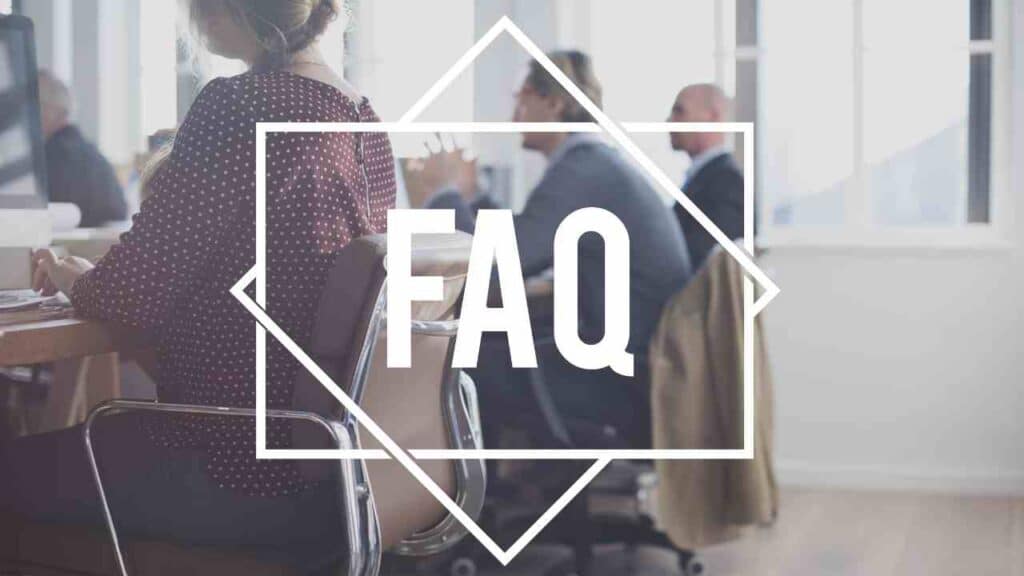
What is a CRM funnel?
A CRM funnel is a visual representation of the customer journey from initial contact to conversion, typically divided into stages such as lead generation, qualification, nurturing, and closing.
Why is streamlining a CRM funnel important?
Streamlining a CRM funnel helps optimize the customer journey, improve efficiency, and increase conversion rates by eliminating bottlenecks and unnecessary steps.
How can I streamline the lead generation stage?
To streamline lead generation, focus on targeted marketing campaigns, use lead scoring to prioritize prospects, and automate lead capture and qualification processes.
What strategies can be used to streamline lead qualification?
Implement clear qualification criteria, automate lead scoring and routing, and use CRM analytics to identify high-quality leads for faster follow-up.
How can I streamline the nurturing stage?
Personalize communication with leads, automate email campaigns, provide relevant content, and use CRM automation to trigger timely follow-ups based on lead behavior.
What techniques can be used to streamline the closing stage?
Implement sales automation tools, provide sales reps with real-time access to customer data, automate proposal generation, and use CRM analytics to identify bottlenecks in the closing process.
How can CRM analytics help streamline the funnel?
CRM analytics provide insights into customer behavior, identify areas for improvement, and help optimize the funnel by tracking key metrics and identifying bottlenecks.
What role does automation play in streamlining a CRM funnel?
Automation eliminates manual tasks, reduces human error, and speeds up processes, allowing for a more efficient and streamlined CRM funnel.
How can I ensure maximum conversion rates in a streamlined CRM funnel?
Continuously monitor and optimize the funnel, provide personalized experiences, align sales and marketing efforts, and use CRM analytics to identify and address any conversion barriers.
What are the benefits of streamlining a CRM funnel for maximum conversion?
Streamlining a CRM funnel improves efficiency, reduces costs, increases conversion rates, enhances customer experience, and allows for better tracking and analysis of the sales process.In conclusion, streamlining a CRM funnel for maximum conversion is crucial for businesses to optimize their sales and marketing efforts.
By carefully analyzing and optimizing each stage of the funnel, businesses can identify and address any bottlenecks or inefficiencies that may hinder the conversion process.
This can involve implementing automation tools, improving lead qualification processes, personalizing communication, and continuously monitoring and analyzing data to make data-driven decisions. By streamlining the CRM funnel, businesses can enhance customer engagement, increase conversion rates, and ultimately drive revenue growth.

